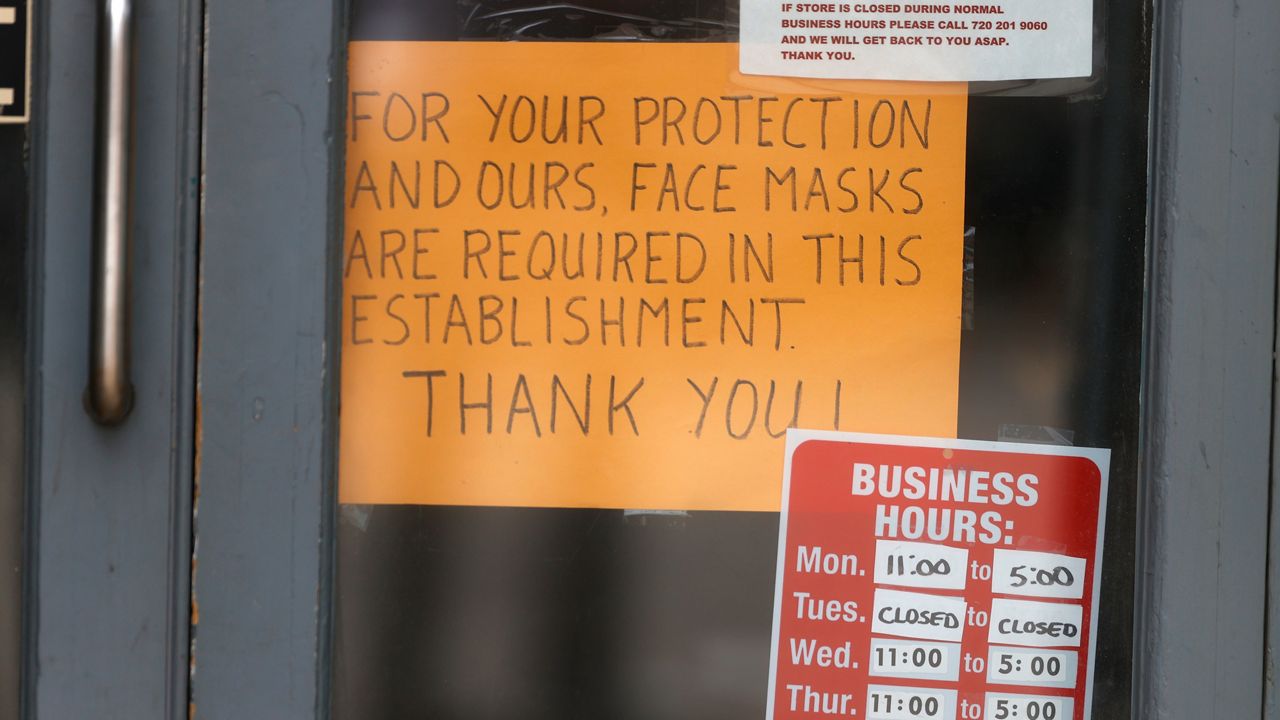Coronavirus cases are on the rise across the country and in New York while Congress continues to stall on another injection of money into the economy to aid small businesses and workers.
It's that combination -- a resurgent pandemic and a lack of money to soften the landing for the economy -- that has small business groups like the National Federation of Independent Businesses (NFIB) worired.
In a statement Monday, the organization urged state officials to continue the more targeted "micro-cluster" approach that targets areas that have high case loads, but avoids a broader disruption in the economy.
“As New York, the nation, and the globe confront COVID-19’s long-predicted second wave, it’s imperative we build upon the strategies that have proven successful," said NFIB's State Director Greg Biryla. "There is little to indicate that day-to-day business activity or commerce is contributing to the recent spread. New York’s innovative and measured micro-cluster containment zones have demonstrated success in controlling the virus while allowing local economies to generally operate."
The cluster zone strategy, depending on the severity of the cases, could lead to restrictions that close gatherings areas and businesses, but only in a prescribed area.
"Most communities designated earliest as containment zones are generally experiencing a reduction in transmission. Brooklyn, Rockland, Orange, Broome, Chemung, and Westchester focus zones have all responded positively since their initial designation," Biryla said. "While New York’s cluster strategy may be new and its implementation still evolving, it is New York State’s best approach to protect public health and preserve local economies."
Small businesses have benefitted from federal support earlier this year. The group found in an October survey that 77% of small businesses received a loan under the Paycheck Protection Program.
But at the same time, 90% of businesses have said they have exhausted their loan funds and 83% of seen a decline in sales volume compared to before the crisis hit.
For now, it's not clear if a lame duck session of Congress will act on a stimulus measure or wait for the change in administrations. President-elect Joe Biden has vowed to push for a major economic relief bill aimed at aiding the economy and supporting cash-strapped local governments and states.
President Donald Trump has also called for a COVID relief package from the lame duck Congress, though the size of the aid may not be enough, economists have warned.
New York's unemployment picture has brightened since the worst days of the spring, when nearly one out of five people were out of work. Unemployment in September dipped below 10% for the frist time since April. That could change as the winter comes and more COVID cases are found.
“COVID-19 has ripped a path of heartbreak, loss, and economic destruction through our nation and in communities across our state. That path began a little over eight months ago, and in many respects, New York State chartered a path forward for others to follow. Our frontline personnel and healthcare professionals worked around-the-clock, state and local leaders employed innovative and lifesaving public health strategies, and our business community and the public sacrificed livelihoods to contain the virus," Biryla said.
"This unprecedented effort and coordination resulted in New York State not only ‘bending its curve,’ but maintaining one of the lowest infection and transmission rates in the nation as our economy progressively reopened throughout the spring and summer."



